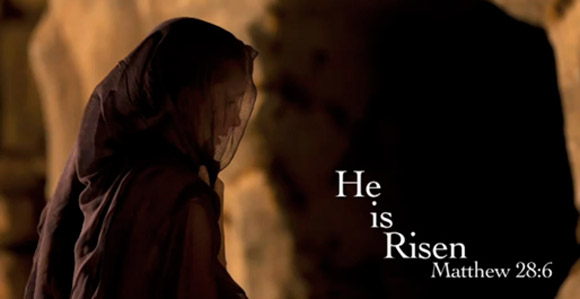Easter Mormon Message Testifies of Christ in Simple, Powerful Way
Contributed By Heather Wrigley, Church News and Events

The team that created this Mormon Message began by researching the trials Christ underwent. Then they asked themselves how He responded. The result was a simple, powerful message.
A search of the accounts in the Four Gospels of Christ’s final days on earth prior to His Crucifixion reveals a horrific story through words like “betrayed,” “rejected,” and “forsaken,” but if one continues to read, there are also beautiful words and phrases such as “forgave” and “held His peace” (see list below).
These words from the scriptural accounts of Matthew, Mark, Luke, and John were the inspiration for the new Mormon Message, “His Sacred Name—An Easter Declaration,” out just in time for the season and general conference.
“We wanted to portray the story of Christ simply, to let people feel the reverence of the message,” said Tucker Dansie, editor and technical consultant for the piece.
That goal was accomplished with the use of original, abstract photos, taken specifically for this Mormon Message and minimal text—just a few words from the scriptures with their references.
“You can see only a small part of the story with each picture, and that’s the beauty of it,” said Christina Torriente-Robey, coproducer of the message. “With each image and scripture, you’re caught in that one second, and you can ponder the powerful message it represents. We hope people will go deeper and read the scriptures.”
One of the most powerful images from “His Sacred Name” is that of Mary Magdalene approaching the tomb. Sister Torriente-Robey represented Mary Magdalene in that photograph.
“I got a little glimpse of what Mary felt—looking for the Savior and not being able to find Him,” she said. “She is the symbol for all of us—we’re always looking for Him.”
The team that produced this Mormon Message started by researching all the trials Christ faced. Then they asked themselves, “How did Christ respond?” Sister Torriente-Robey said. The answer was “Jesus held his peace” (Matthew 26:63).
“He can relate to us because He’s been through so many of those things—mockery, rejection, betrayal, being forsaken,” she explained. “Because He went through it all, we know He can understand and relate to us.”
In April 2010 general conference, President Thomas S. Monson clarified: “In our hour of deepest sorrow, we can receive profound peace from the words of the angel that first Easter morning: ‘He is not here: for he is risen’” (“He is Risen,” Matthew 28:6).
Text of Mormon Message, “His Sacred Name—An Easter Declaration”
He was betrayed (Matthew 26:14–16)
Denied (Luke 22:54–62)
Accused (Mark 15:3)
Rejected (Luke 9:22)
Bound (Mark 15:1)
Scourged (John 19:1)
Mocked (Matthew 27:29)
Reviled (Matthew 27:39)
Spit on (Mark 15:19)
Crucified (John 19:17–19)
Forsaken (Matt 27:46)
He was obedient to His Father’s will (Mark 14:36)
Atoned (Luke 22:41–44)
Healed (Luke 22:50–51)
Held His peace (Mark 14:61)
Forgave (Luke 23:34)
He gave His life (John 19:30)
He is risen (Matt 28:6)
“My beloved brothers and sisters, in our hour of deepest sorrow, we can receive profound peace from the words of the angel that first Easter morning: 'He is not here: for he is risen.'
“As one of His special witnesses on earth today, this glorious Easter Sunday, I declare that this is true, in His sacred name—even the name of Jesus Christ, our Savior—amen.”
